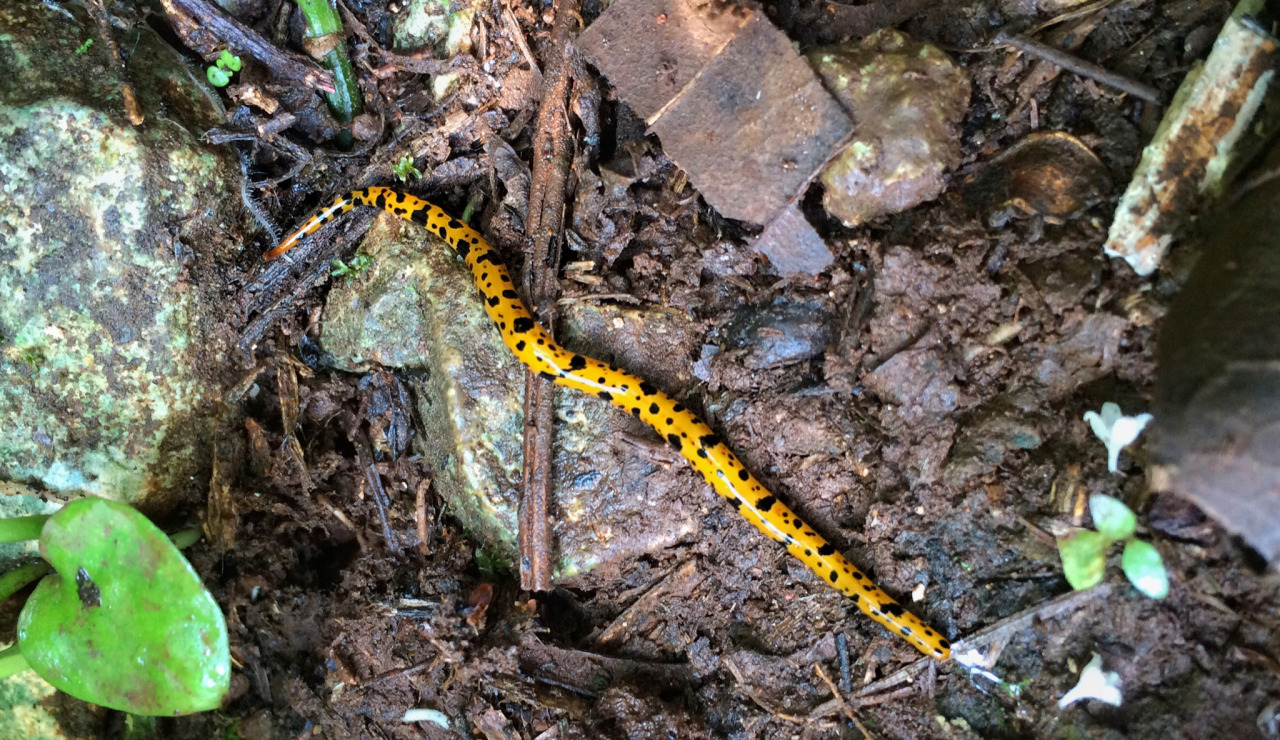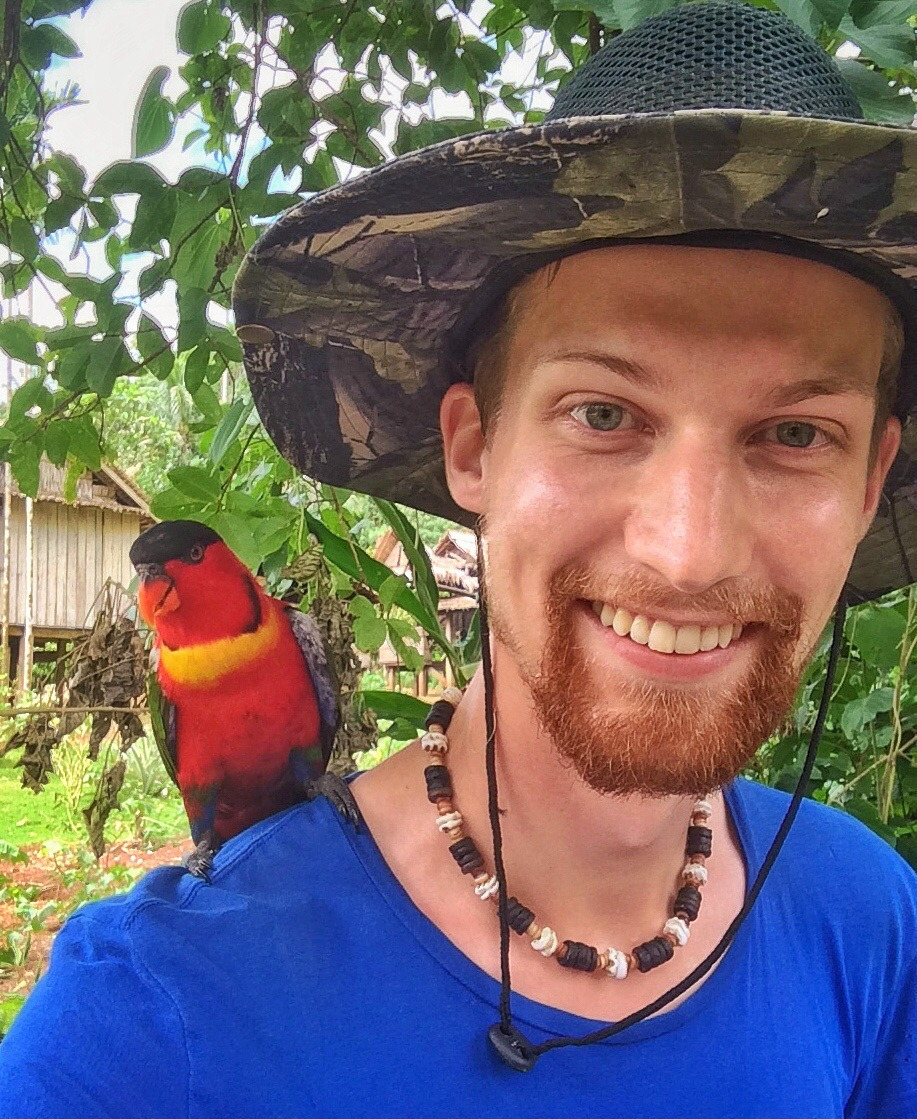Observation of the Week, 2/17/16

This Land Planarian seen by plantcrazy007 in the Solomon Islands is our Observation of the Week!
As his iNaturalist username - plantcrazy007 - suggests, Matthew Bond has been obsessed with plants and nature since childhood. “Around age seven, I started to collect and dissect plants in a manner that was eerily similar to my future university taxonomy and physiology classes,” he says, and he is now a PhD student at the University of Hawai’i at Manoa, where he studies ethnobotany - how people and plants interact.
Matthew’s current research has brought him to the Solomon Islands, where he is studying “how people look at the forest around them and decide what plants to use for medicine,” and is working in four villages so isolated that “it takes two days to get here by being jostled in the back of a truck on gravel roads, riding on cargo ships and motor boats, and hiking three kilometers up a mountain.” Running water, of course, is not an option so he has to walk through the jungle to the latrine.
“I know these paths very well so I notice instantly when anything is different - in this case I saw a glimmer of orange next to the trail, partially hidden by leaves,” recalls Matthew. “I quickly dug in the leaves and was delighted to discover this planarian!” Matthew uploaded it to iNaturalist to see if someone could identify it. Jean-Lou Justine (@jeanloujustine), a Professor of Parasitology at Muséum National d'Histoire Naturelle in Paris, saw the observation and sent it to his colleague Dr. Leigh Winsor, an Adjunct Senior Research Fellow at James Cook University Townsville in Australia, who believes it’s probably an undescribed species in the Geoplanidae family of land planarians. Matthew will collect specimens of the worm when he heads back to Hawai’i in a few weeks and send them to Jean-Lou and Leigh for study.

So just how does one identify a planarian specimen? Dr. Winsor, who has been studying land planarians for over 40 years, was kind enough to send me an explanation, with the caveat that “taxonomy of land planarians is not for the faint hearted.” Because color and patterns can vary quite a bit within a species, one has to look at morphological features such as musculature and copulatory organs, as well as molecular data. After being put in several media, including molten paraffin wax, the worm is serial sectioned at 7-8 micrometers. The sections are stained, then “examined microscopically and drawings of particular areas of the body are made with the aid of a drawing tube, then they are combined to reconstruct the anatomy of the specimens as a 3-D illustration,” says Dr. Winsor. Ideally one would also have a DNA profile of the specimen. “Only some 55-60% of the 900-1000 described species of land planarians have been examined anatomically,” he says. “There is much yet to be done,”
As for Matthew, he says that once his fieldwork in the Solomon Islands is complete and he has steady internet access, he plans on uploading observations from his previous fieldwork locations such as Rapa Nui and the Dominican Republic. “I love being able to ask for help from scientists (both professional and amateur) to identify what I find so that I can learn more about it,” he says. “Although I’m collecting plant samples as part of my work I’m excited that even the photographs I take of other organisms for fun will help my fellow scientists.”
- by Tony Iwane
For more pictures and stories of Matthew’s research in the Solomon Islands and around the world, check out his twitter and blog.
If you would like more information about land planarians or are interested in sending him a specimen, you can contact Dr. Leigh Winsor at klwinsor@internode.on.net.





Comments
Add a Comment